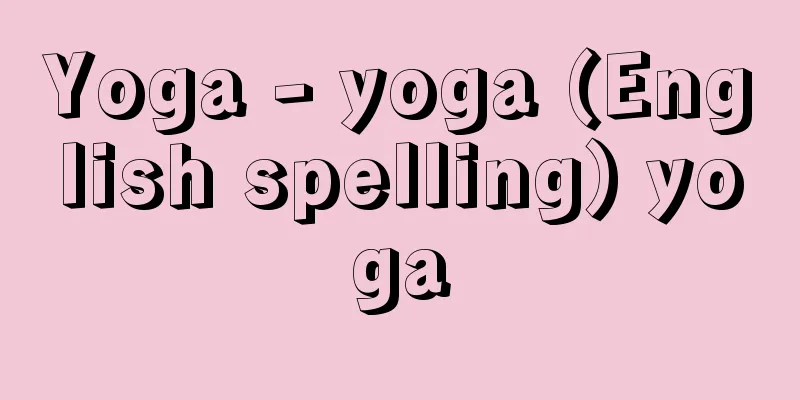Dance hall - dansuho-ru (English spelling) dance hall

|
Ballroom. A term used mainly in Japan and America, and called a dancing room or ballroom in Britain, it usually refers to an entertainment venue open for the purpose of ballroom dancing. Many are set up as part of a hotel. In Europe from the Middle Ages onwards, halls were set up in public and private residences or hotels and became popular as places for socializing, but there were no commercial facilities solely for ballroom dancing, and it was the custom for customers to dance together at nightclubs and other venues. Ballroom dancing in Japan began with balls at the Rokumeikan (completed in 1883) during the Meiji period, and the first commercial dance salon with its own band was opened in 1918 (Taisho 7) at the Kagetsuen Restaurant in Tsurumi, Yokohama, Kanagawa Prefecture. Then dance clubs playing music from records were established in Tokyo, and dance halls with bands were established in Osaka, where their own female dancers entertained customers. Before World War II, there were 50 such dance halls in major cities across the country. They were closed during the war, but after the war, dance halls were opened exclusively for the American occupying forces, and they began to appear again in various places. Later, cabarets and nightclubs took their place, and dance halls where people danced to rock and roll records became popular, and were called discothèques and were used by young men and women. Since the 1980s, there have been almost no dance halls legally defined in Japan (the Entertainment and Amusement Business Control Law). A proper (legal) dance hall is a place that provides facilities for customers to dance, and is not permitted to sell alcohol or provide entertainment, but many of them operate under the same business license as cabarets and nightclubs. However, the previous heyday of cheek dancing has changed dramatically, and sports dancing, which involves sweating and dancing widely, has become mainstream, transforming into a healthier form of dance. [Nohto Sato and Manabu Shinoda] "Ballroom Dance and the Japanese" by Yoshikazu Nagai (1991, Shobunsha) [References] | | | |Source: Shogakukan Encyclopedia Nipponica About Encyclopedia Nipponica Information | Legend |
|
舞踏場。おもに日本とアメリカにおける用語で、イギリスではダンシングルームdancing roomまたはボールルームballroomといい、普通、社交ダンスを目的として営業する娯楽場をいう。ホテルの一部に設けられたものも多い。中世以降のヨーロッパでは公・私邸あるいはホテルなどにホールを設けて社交の場として普及したが、社交ダンスだけを目的とする営業的施設はなく、ナイトクラブなどで客同士がダンスをする風習であった。 日本で社交ダンスが行われたのは明治時代の鹿鳴館(ろくめいかん)(1883完成)における舞踏会が始まりで、1918年(大正7)、神奈川県横浜市鶴見(つるみ)の花月園食堂に専属のバンドを置いたダンスサロンを設けたのが営業的なものの最初とされる。ついで東京にレコード演奏によるダンスクラブができ、大阪にもバンドを置いたダンスホールが続々誕生して、専属の女性ダンサーが客の相手をつとめた。こうしたダンスホールは第二次世界大戦前には全国主要都市に50を数えた。戦時中は閉鎖されたが、戦後アメリカ進駐軍専用のダンスホールが開設されたのに始まり、ふたたび各地にみられるようになった。その後キャバレーやナイトクラブなどがこれにかわり、ロックン・ロールのレコードをかけて踊るダンスホールが流行し、ディスコテークdiscothèqueとよばれて若い男女に利用された。 1980年代以降の日本には、法律(風俗営業等取締法)で定められているダンスホールはほとんど存在しない。本来の(法定の)ダンスホールとは、「設備を設けて客にダンスをさせる営業」をする場とされており、酒類などを販売したり、女性が接待してはならないのだが、多くはそのようなキャバレーやナイトクラブと同じ営業形態の許可をとって営業しているものである。ただし、以前のようなチーク・ダンス全盛の形態は大きく変化し、汗をかき、大きく踊るスポーツ・ダンスが主流となり、健康的なダンスに変革している。 [佐藤農人・篠田 学] 『永井良和著『社交ダンスと日本人』(1991・晶文社)』 [参照項目] | | | |出典 小学館 日本大百科全書(ニッポニカ)日本大百科全書(ニッポニカ)について 情報 | 凡例 |
Recommend
Open and close
〘Noun〙 (also "kaigo") 1. To open and clo...
Noriyuki Kaiho
...A Confucian scholar of the late Edo period. He...
Minister - Daijin
〘Noun〙 ("dai" and "jin" are th...
Ion implantation
The process of ionizing gaseous atoms, acceleratin...
crossing over
...When genes from both parents recombine to prod...
Tendo [city] - Tendo
Located in the eastern part of Yamagata Prefecture...
Labour Representation Committee
The TUC was established in 1975 as a set of two l...
Hanumat (English spelling)
The name of a divine monkey in Hinduism. Also know...
Fust, J.
...It was a masterpiece of Gothic typeface and th...
Toriimoto
The name of a place in Sakata County, Omi Province...
Glass fiber reinforced plastics
…Composite materials in which the continuous phas...
RCA Building
… [The era of the international style] In this en...
Illustrated Guide to the Three Kingdoms - Sankoku Tsuuranzusetsu
A five-colored geographical map published by Haya...
Hofer, C.
...O. Dix's triptych "The City" (19...
Youth hostel (English spelling)
Simple, clean, inexpensive accommodation for young...









